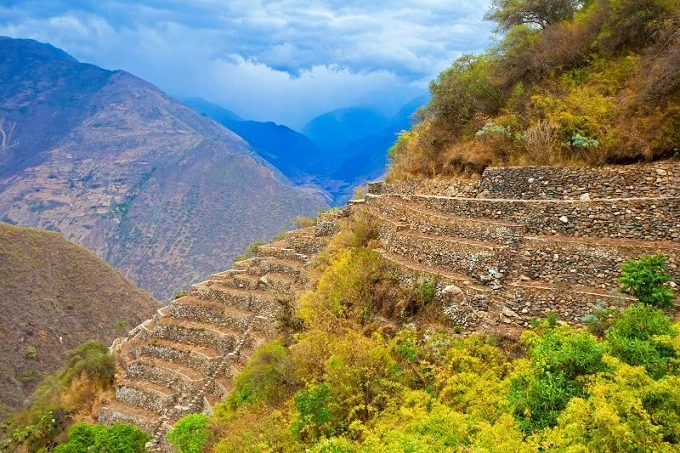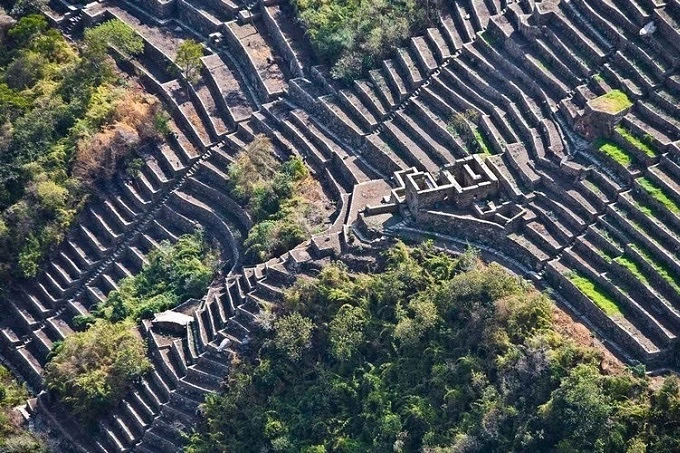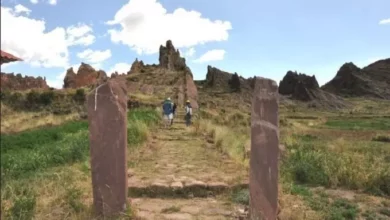Choquequirao – The Golden Cradle of the Incas

Choquequirao is the second lost Inca city after Machu Picchu. It is located in the south of Peru, in the province of Cusco, and the remains of the Inca Empire metropolis there have only been partly excavated. The name Choquequirao comes from the Aymara language of South America and translates to Golden Cradle. The literature refers to the city as Machu Picchu’s “sister” due to the fact that its layout and design are similar to those of Machu Picchu.
Choquequirao has seldom been investigated and has not been dug. Travelers and explorers will have a difficult time getting inside the city. It is impossible to get there by any other means. The trail that leads to Choquequirao is a far more challenging hike than the more well-known Inca Trail that leads to Machu Picchu. The trail travels across a variety of climate zones and has a significant elevation gain/loss throughout its route. It usually takes between four and five days to get all the way there and back again.
According to academic research and scholarly consensus, Choquequirao was established sometime during the reign of Pachacuti Inca Yupanqui. Choquequirao was not visited by the Spanish during their invasion of Inca territory in 1532; hence the city was not pillaged or destroyed at this time.
Choquequirao was also the safe haven of Manco Inca Yupanqui, also known as Manco Capac II, the supreme ruler of the Incas during the conquest and the leader of one of the largest Indian uprisings in South America against European domination. Manco Inca Yupanqui led one of the largest Indian uprisings in South America against European domination.

Choquequira is thought by some academics to have served as a form of garrison along the route leading to Vilcabamba, the hidden capital of the last monarch who was exiled. Others maintain that the city known as “Golden Cradle” is, in fact, Vilcabamba and that the term is only an adjective for the location of the secret royal capital. The fact that Choquequirao cannot be reached lends credence to this idea.
The field of Choquequirao studies has a fascinating and long-standing history. It has been found and documented several times, yet each time it is promptly forgotten again, as though the city hid from outsiders. It is thought that Juan Arias Diaz, a Spanish adventurer who came in 1710, was the very first non-Indian to see Choquequirao. Diaz arrived in this area that year. However, the sole evidence supporting this assertion consists of circumstantial evidence.
Later, in 1768, Cosme Bueno was the first person to document information on Choquequirao; nevertheless, these records were neglected for a considerable amount of time. The name Eugenio de Santiguez is connected with the official discovery of the lost city of the Incas. In 1834, he visited the site and left comprehensive reports of his experiences there.
The American archaeologist Hiram Bingham, who is credited with discovering Machu Picchu, did not arrive at the site until 1909, long after aviation pilots had first seen it from the air. And it wasn’t until the 1970s that the first archaeological digs were carried out at Choquequirao.
Choquequirao is situated in the Salkantay mountain range at an elevation of 3085 meters above sea level and 1750 meters above the Apurimac River. The ruins of Choquequirao date back to the Inca Empire. Approximately 1,800 hectares make up the overall land area of the architectural complex. To this day, only 30–40 percent of the land of the complex has been excavated, which means that the effort that experts have done to dig and research Choquequirao has not even come close to being finished.
Choquequirao is one of the most alluring Inca sites in the Peruvian Andes; nonetheless, getting there is one of the most challenging aspects of visiting the site. The city’s extraordinary architecture, stone terraces, and towering constructions are sure to wow visitors.
Because of the breathtaking panorama that can be seen from the highest points of the mountain range, the city of Choquequirao has gained a lot of notoriety in recent years. From this vantage point, the powerful Apurimak River appears like a silvery ribbon cutting through the enormous stone massif. Along the length of the canyon is a never-ending procession of rock formations, cascading waterfalls, steep mountain sides covered in dense vegetation, and brilliant snow-capped summits…
Many historians, artists, and others interested in finding Inca riches have been drawn to the lost city of Choquequirao, which the Incas referred to as the “Eagle’s Nest,” since the middle of the ninth century. This is more than a century and a half. Pablo Jose de Arriaga, a Jesuit missionary who served in Peru, made reference to it in the writings he authored.
Treasure hunters have been coming to Choquequirao for a very long time because of old mythology about the innumerable Inca riches that are said to be concealed among the ruins. The treasure, on the other hand, has not been located to this day.

In the year 1847, Choquequirao had a visit from a French ambassador as well as an artist. Leonce Angran, who was searching for “untold riches concealed in ruins, when the remnants of the Sun people had withdrawn to this wild spot which had become their shelter,” stole his way through the woodlands to get to the furthest ruins.
J. Nez, who was the leader of Apurmac Province at the time, amassed thousands of dollars and led an expedition to the ruins of Choquequirao in search of treasure during the first decade of the twentieth century. This event is widely regarded as the moment when interest in Choquequirao reached its highest point. He was able to make it all the way to Choquequirao, but he didn’t make any really noteworthy findings before heading back. Almost immediately after that, in February of 1909, Hiram Bingham posed at the location. He descended to Apurimak, crossed the bridge, and then stayed in Choquequirao for many days, during which time he sketched and photographed the fabled remains there.
The biggest constructions in the city are those that are representative of the Inca culture. In and around the central plaza are the locations of the temple, a number of administrative buildings, and the residential sections reserved for the nobles. On the outskirts, residential neighborhoods cluster together to create a quaint little hamlet. There are a great number of aqueducts, water springs, and canals for transporting water. The majority of the structures have been kept in good condition, while work on restoring some of the others is currently in progress.

Researchers have not been able to find answers to the following questions up until this point: what is the actual age of Choquequirao, what was the city’s first name, who built it, why and for what purpose was it built on a rugged mountain range, who originally lived in this city, why was it abandoned, and where did the Inca treasures go?




